Ceramic bathroom border: varieties and choices

In modern bathroom design, the most common surface is ceramic tiles, which, thanks to a huge selection of colors and textures, can be ideally matched to any style.
In order for the room to get a complete look at the end of the wall decoration, it is recommended to additionally install ceramic corners. They will not only decorate the decorative finish in an original way, but also ensure the sealing of the joints.
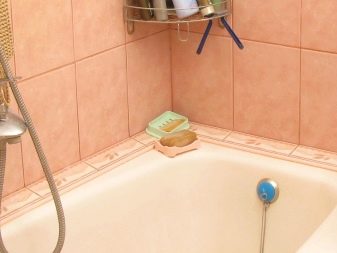

Advantages and disadvantages
One of the most common problems encountered in the process of renovating bathrooms is the formation of gaps between the walls and the edge of the font. You can easily eliminate such a defect by installing a special border. This is a wall decor element, the material for which is usually ceramics. Such a border has numerous advantages in addition to its attractive appearance.
- Resistant to high humidity. During production, the surface of the product is covered with a layer of glaze, which does not allow liquid to pass through.
- Durability and resistance to mechanical damage... Thanks to this quality, the corner and the border on the tiles can be used for at least 25 years.
- Easy to care for. Ceramics are not afraid of the aggressive effects of detergents, so the cladding can be washed with any chemical composition.
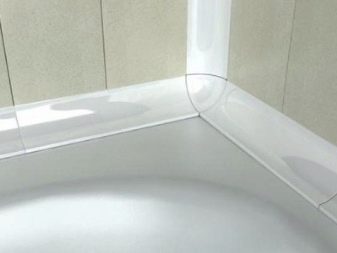

As for the shortcomings, a number of nuances can be attributed to them.
- High price. Because of this, many people prefer to buy a cheaper plastic option, but unlike a ceramic product, it serves a shorter period and quickly loses its attractive appearance.
- Despite the fact that a ceramic curb is characterized by strength, it is still fragile, and cracks can appear on the surface of the material upon impact... As a result, moisture will begin to collect, which will serve as a favorable environment for the development of microorganisms.
- Installation of ceramic borders usually applied to tile adhesive, for which you need to have some experience.
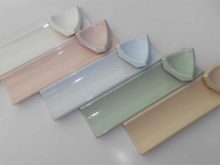

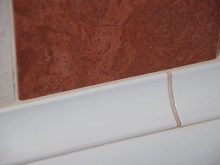
Types and sizes
The cracks between the tiles and the walls of the plumbing can appear for various reasons: it can be the curvature of surfaces, an error in facing, and more. To effectively eliminate such a flaw in the design of the room, use a ceramic border for the bathroom. This decorative element is presented in several types.
- Angular. It is a narrow tile that looks like a corner. This option is usually used to close medium and large gaps formed between the bathroom and the wall surface.
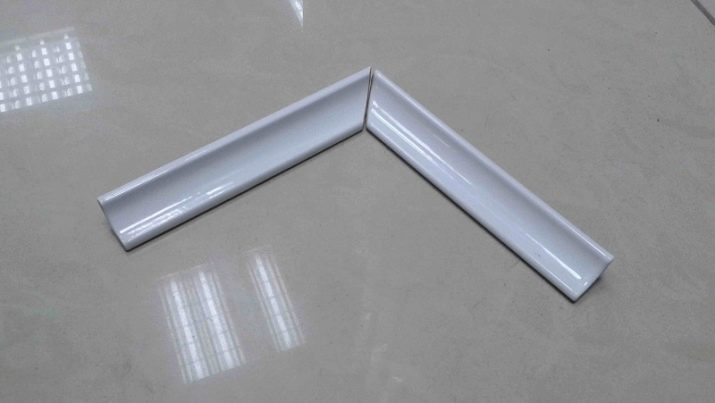
- Pencil. This is a rectangular ceramic tile that has a width of 3-4 cm and a length of 30 cm. This type is intended only for closing small gaps. In addition, such a border can be used for room zoning.
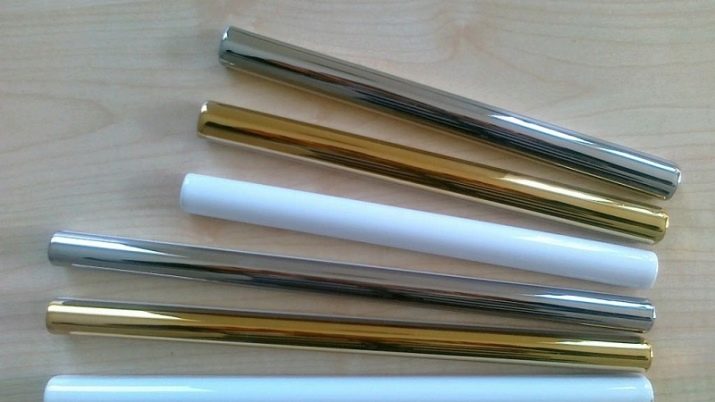
- Frieze. It looks like a special tile, which is used for the first row of surfaces above the bathroom. Unlike conventional tiles, a sag is placed on the lower cut of the frieze, due to which the gaps are closed. Well suited for narrow gaps.
Ceramic borders also vary in size. They are standardly produced in lengths of 20, 25, 30, 40 and 60 cm. The dimensions of the curbs must be selected taking into account the design of the walls and the area of the bathroom itself. The width of the products can be from 30 to 50 mm.
For the decoration of the corners, plugs are used separately, which are called "asterisks".
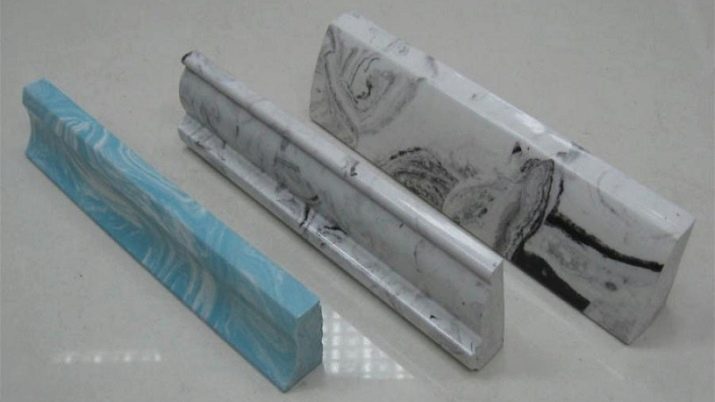
Design
A decorative ceramic border allows you to give a bathroom design a certain chic, sophistication and originality. In order for the skirting board to harmoniously combine with other interior elements, it is important to take into account many nuances, otherwise the design will create a feeling of incompleteness. Today the borders are represented by a variety of patterns and colors, which opens up huge opportunities for designers in the implementation of the most interesting projects.
In the case when the floor is white in the room, you need to select the appropriate tiles on the walls and create decor using gold or black borders. Gloss also looks gorgeous in such rooms - in this case, borders with the image of geometric shapes or with plant motifs should be selected.
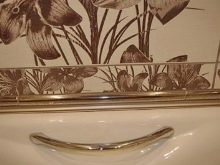
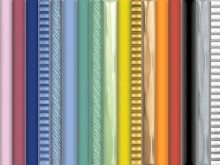
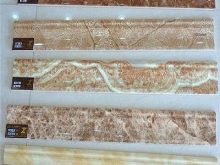
With the help of ceramic borders, you can highlight separate zones in the room, laying out vertical or horizontal edges for niches. For fans of unusual design, experts recommend choosing decorative elements in bright colors: yellow, orange and red colors will be a good choice for this. Cold shades (gray, blue, green) will, on the contrary, contribute to the emergence of a relaxing atmosphere. Compositions made of materials of different textures look unusual in design, for example, walls are faced with matte tiles, and a glossy border is chosen.
If the bathroom design provides for a special style, then curbs must necessarily correspond to it... For classic style and minimalism, skirting boards of light shades, without images, are ideal; in Provence and country style, on the contrary, it will be appropriate to place borders with images of flowers or geometry.
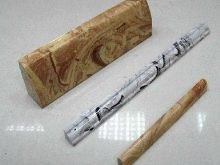
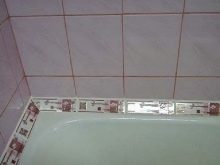
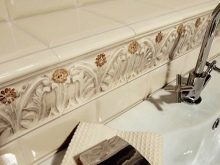
Selection Tips
In order for a ceramic border to reliably serve for a long time and harmoniously fit into the general appearance of the room, some features should be taken into account before choosing it. So, for a room sheathed with PVC panels, a ceramic border will not work. You also need to pay attention to the material from which the bathtub is made. Ceramic finishing is not allowed for acrylic products. Also important is such an indicator as the size of the gap between the bathroom and the wall surface. Large slots are best covered with skirting boards made of a different material.
When choosing a decorative side for the bathroom, you should pay attention to its width - it should be 2-3 cm larger than the gap itself... In addition, in addition to the curbs, you need to purchase corners that must match the size, material and color scheme of the borders themselves. First you need to decide on their number, counting the number of internal and external corners. The thickness of the corners should be several millimeters larger than that of the tile.
As for the color palette, it is matched to the tile itself; the corners can either contrast with the finish or merge with the main shade.
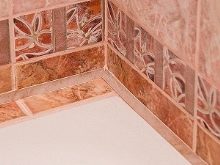
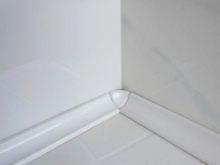

Examples in interior design
Today, the design of the bathroom can be decorated in various ways, but if tiles were used in the decoration of the walls, then a ceramic border will help give the room a complete look. It looks original and unusual, filling the interior with special notes. You can apply borders in the design using various options depending on the style of the room.
- Provence style bathroom. This direction provides for the presence of light shades, therefore, wall cladding and flooring should be done in snow-white or beige tones. In this case, it is necessary to decorate the decoration with borders with floral ornaments. An unusual solution would be if their images are continued on the ceiling. To do this, install a printed stretch ceiling. Good lighting should also be provided, thanks to which the composition on the skirting boards will acquire expressiveness.
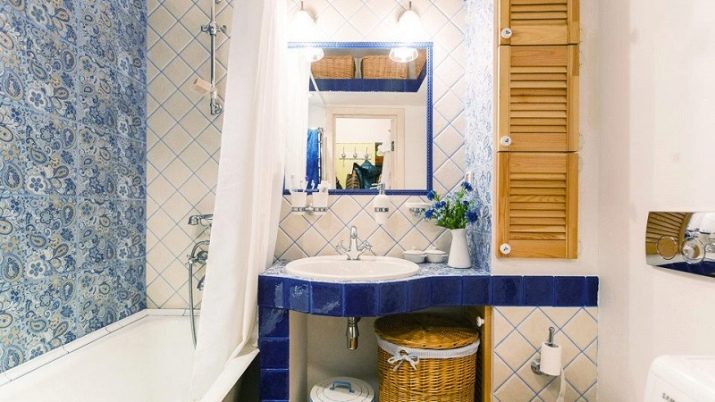
- Classic style room... Such bathrooms must be distinguished by their solidity, therefore it is important to use beautiful multi-level ceilings with LED lighting and wall cladding with ceramic tiles in restrained tones in the design. To make everything look natural and natural, it is necessary to select plumbing fixtures made of porcelain or natural stone, and close the gaps between it and the surface of the walls with ceramic borders imitating natural materials. An excellent solution would be products with imitation of wood or marble.
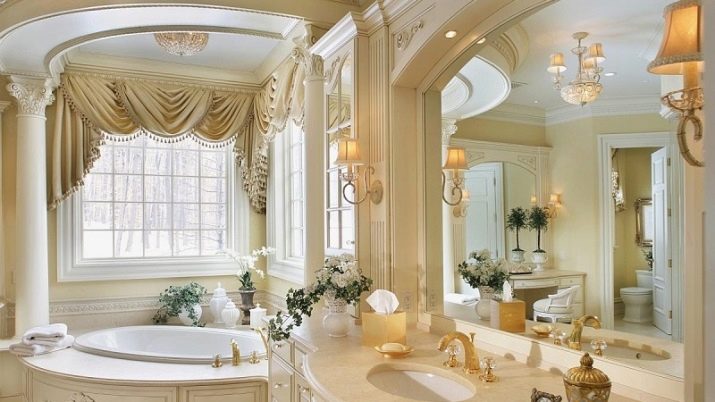
- Modern style... In this design, everything should look simple and expensive at the same time. For wall decoration, large-sized monochromatic ceramics are suitable, which must be decorated with borders of the appropriate color. Ceramics without patterns are a good choice. They will help close the gaps between the shower stall, sink, bathtub and wall surfaces. At the same time, it is desirable that such sides are of the same shade as the pieces of furniture. For example, dark brown borders with a gilded effect will look gorgeous on a beige background of tiles.
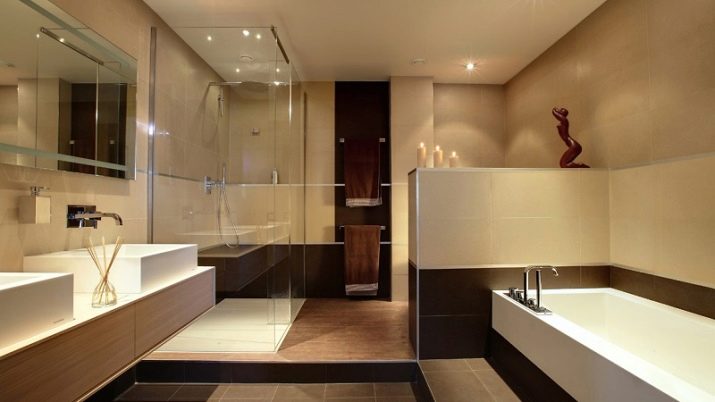
- Ethnic style. This trend is very popular among designers, as it allows you to decorate bathrooms with an unusual interior. For wall decoration, tiles are usually used, on the surface of which ornaments are applied, indicating a particular ethnic group. An interesting option would be to install a panel above the bathroom with an image of African savannas, and in this case, the gaps between the plumbing and the wall should be closed with a ceramic border in a contrasting color. It should be harmoniously combined in the room with furniture and other decor items.
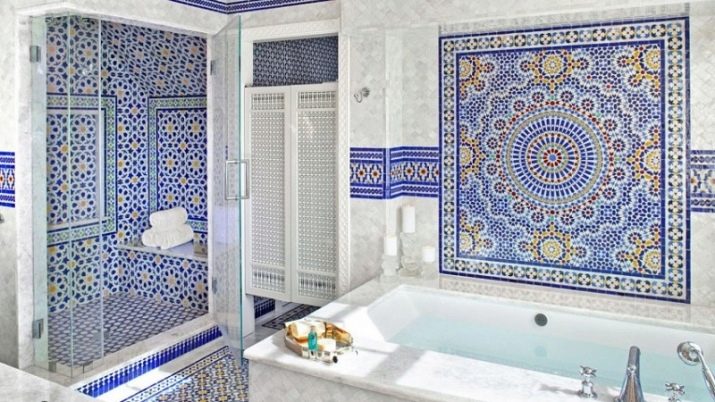
- Lovers of naturalness can decorate the bathroom. in a "rustic" style, choosing for decoration tiles with imitation of natural stone and brick. You need to decorate the cladding with narrow ceramic rims, on which weaving patterns are applied.
Such borders look beautiful against the background of wicker laundry baskets and are harmoniously combined with natural textiles.

For information on how to properly glue the ceramic plinth on the bath, see the next video.








